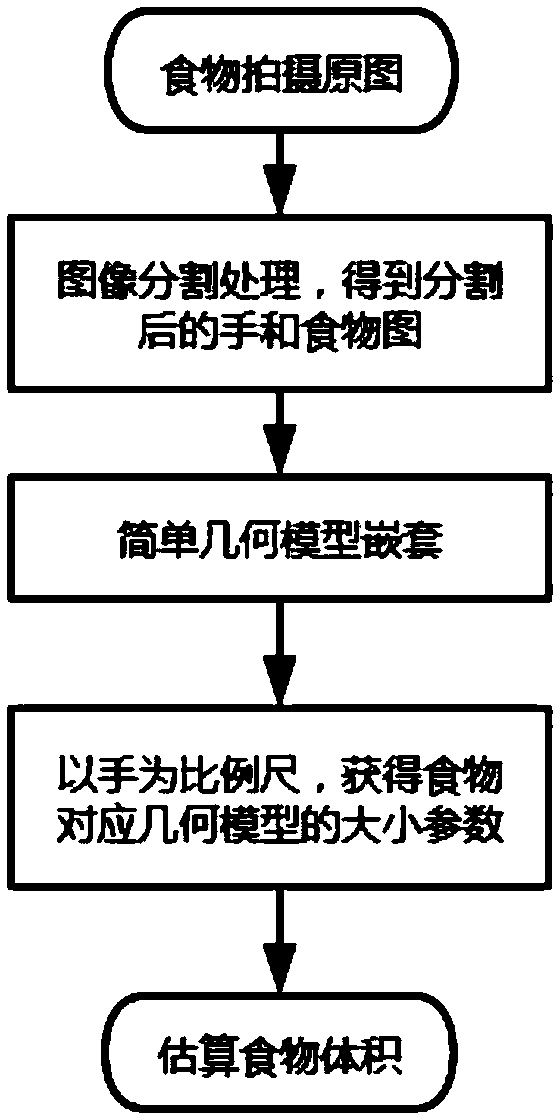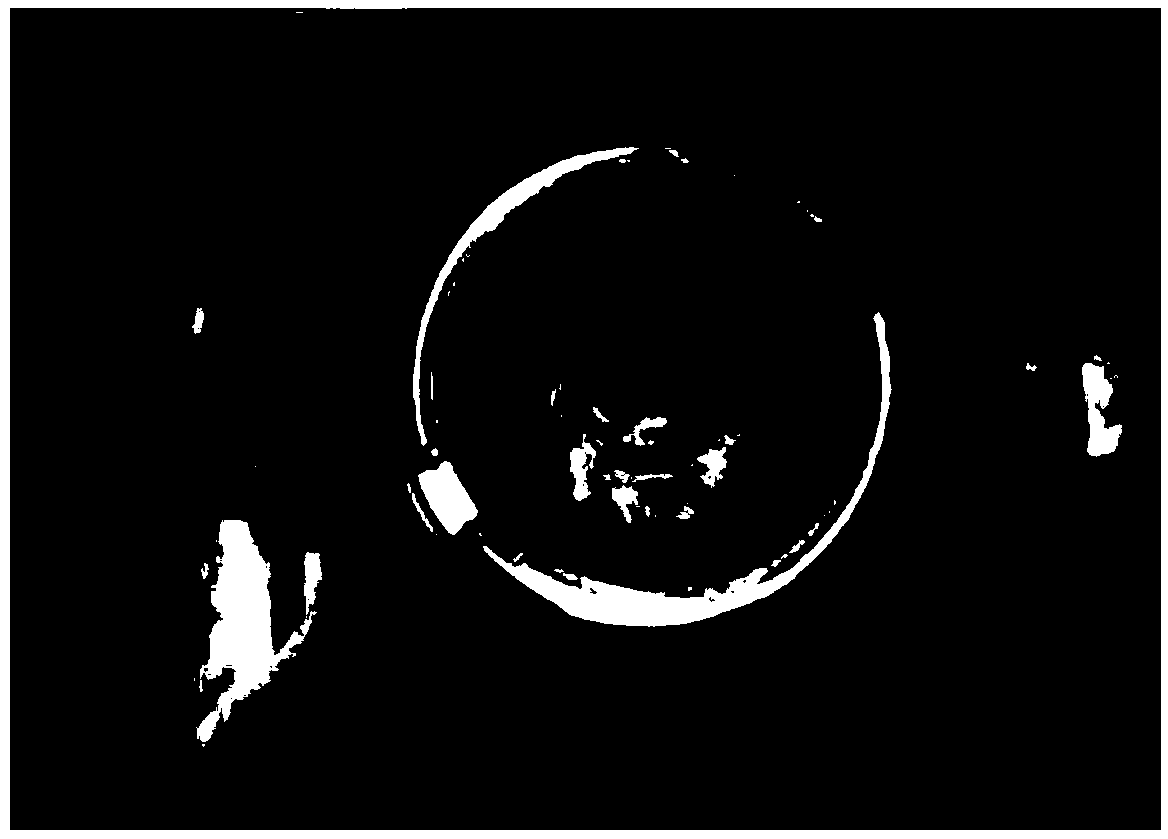Food volume estimation method based on 3D model nesting
A model estimation and food technology, applied in computing, image data processing, instruments, etc., can solve problems such as improvement, difficulty in use, and unfavorable user experience
- Summary
- Abstract
- Description
- Claims
- Application Information
AI Technical Summary
Problems solved by technology
Method used
Image
Examples
Embodiment Construction
[0018] The present invention will be described in further detail below in conjunction with the accompanying drawings.
[0019] figure 1 It is a flow chart of food volume estimation based on three views with the hand as the reference frame.
[0020] pass below figure 1 The present invention is described in detail as a food volume estimation method based on 3D model nesting.
[0021] Step 1: Through investigation and research in this paper, it is found that most of the cooked food can be nested by several fixed models, especially for weight loss and healthy food. Therefore, this paper selects a certain number of 3D models through statistical analysis to build a 3D model library.
[0022] This paper builds a 3D geometric shape model library. For the cuboid, it can be used to calculate foods such as cheese sticks, the formula is:
[0023] V=l*w*h (1)
[0024] For cylinders, it can be used to calculate food such as burgers, the formula is:
[0025] V=πr 2 *h (2)
[0026] F...
PUM
 Login to View More
Login to View More Abstract
Description
Claims
Application Information
 Login to View More
Login to View More - R&D
- Intellectual Property
- Life Sciences
- Materials
- Tech Scout
- Unparalleled Data Quality
- Higher Quality Content
- 60% Fewer Hallucinations
Browse by: Latest US Patents, China's latest patents, Technical Efficacy Thesaurus, Application Domain, Technology Topic, Popular Technical Reports.
© 2025 PatSnap. All rights reserved.Legal|Privacy policy|Modern Slavery Act Transparency Statement|Sitemap|About US| Contact US: help@patsnap.com



